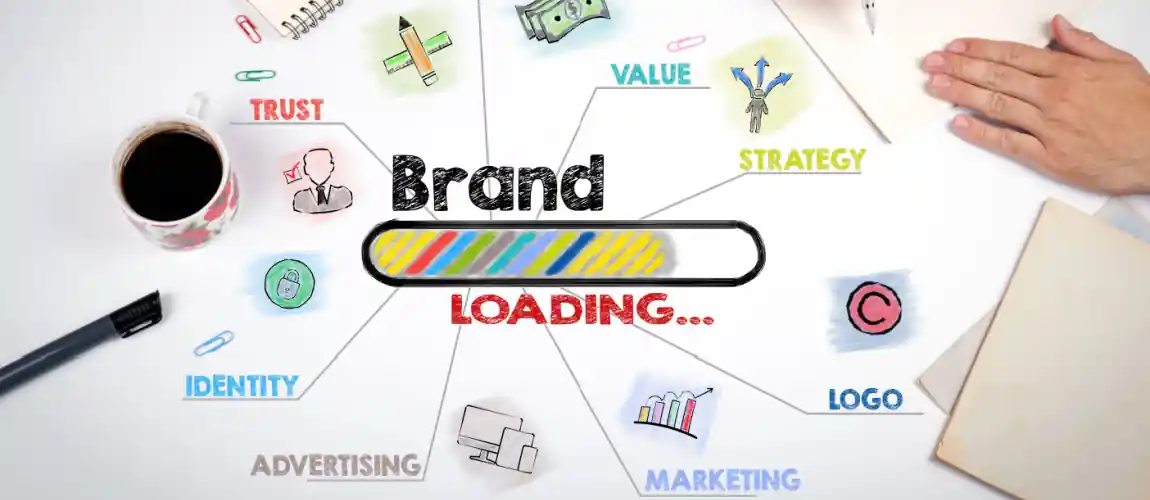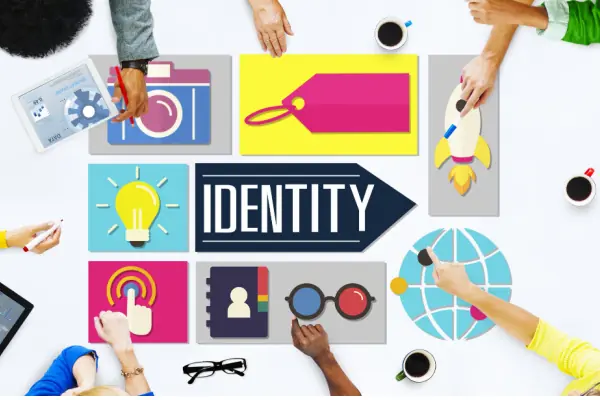
Understanding the different types of branding is key for businesses to stand out in today’s competitive market. A brand is more than a logo or a name; it’s a promise and an identity that connects with consumers on many levels. This article delves into the intricate world of branding. It will highlight the difference between a brand, brand identity, and the broader concept of branding. We will explore successful brands that have mastered the art of creating brand awareness. In doing so, they have set benchmarks in their respective industries.
Branding is a powerful tool for crafting a brand strategy that resonates with your target audience. In turn, this enhances brand value. Whether you’re a budding entrepreneur or an established business, this article will guide you in the right direction. We will show you why branding is important, the different kinds of branding, and how to use them well. By understanding these concepts, you can create a brand that both, stands out and creates a deep connection with customers. This helps in fostering long-term loyalty and success. Let’s discover how to make a great brand strategy together. This will help your brand do well in the ever-evolving business landscape.

6 Reasons Why Branding is Important
When it comes to making a mark in the business world, understanding the types of branding is crucial. Branding is not just about a logo or a name; it’s about creating a unique image in the customer’s mind. This process is vital for any successful business. From the way branding focuses on specific aspects of your company to the importance of branding in the overall business strategy, it’s a game changer. Branding helps in many ways, and in this article, we’ll explore six key reasons why it’s so important.
It allows recognition
Branding makes your business recognizable. Think of it like this: when you see a big yellow ‘M’, you think of McDonald’s, right? That’s branding at work. It’s all about using specific colors, logos, and styles. These things make your brand stand out in people’s minds. When customers recognize your brand easily, they’re more likely to choose you over others. That’s a big plus for your business.
Helps you get more customers
Good branding doesn’t just stop at recognition; it also brings in more customers. When people like your brand, they talk about it with friends and family. This word-of-mouth is powerful. It’s like having a free marketing team! Also, strong branding makes your ads and promotions more effective. People already know and trust your brand, so they’re more likely to buy what you’re selling.
Creates a sense of trust in the market
Trust is a big deal in business. If people trust your brand, they feel safer buying from you. Branding builds this trust. It shows customers that you’re a serious, professional business. A well-branded company appears more reliable and trustworthy than one without any branding. This trust brings loyal customers, which is great for your business.
Helps increase your company’s value
Branding does more than just attract customers; it increases your company’s financial value. A strong brand often means your business is more likely to do well in the future. This makes your company more attractive to investors. They see your brand as a valuable asset. This can be helpful if you ever want to expand or sell your business.
Helps attract new customers
New customers are essential for a business to grow. Good branding makes your company more appealing to potential new customers. It’s like having a bright, inviting sign on your store. It catches the eye of people passing by, making them curious about what you offer. And once they’re interested, they’re more likely to become new customers.
Improves employee satisfaction and morale
Employees love working for a well-branded company. It makes them feel proud and part of something bigger. This pride boosts their satisfaction and morale. Happy employees work harder and stay with your company longer. They become your brand ambassadors, representing your company positively to the world. This internal support is key to a successful business.
Branding is much more than just a part of your business; it’s the heart of your business’s identity. From allowing recognition to improving employee morale, the benefits of effective branding are clear. Whether you’re a small startup or a large corporation, investing in the right types of branding can transform your business. It’s a crucial step towards long-term success and sustainability. Remember, a strong brand is the secret ingredient to a thriving, successful business.

Brand vs. Brand Identity vs. Branding
In the bustling world of business, it’s crucial to understand the concepts of brand, brand identity, and branding. These terms often get mixed up, but they each play a unique role in the success of a business. A brand is like the heart of your company. It’s what people think and feel about your product or service. Brand identity is the face of your brand – the visual elements like logos and colors that make your brand recognizable. Branding is the journey of building and spreading your brand’s story. Each element contributes to your branding efforts and shapes people’s perception of your business. For a successful business, mastering these aspects is vital. Let’s dive deeper into each of these concepts to understand their roles and differences, and how they come together in the realm of types of branding.
Brand
A brand is like a promise you make to your customers. It’s what people think about when they hear your company’s name. Think of it as the overall image of your business. This includes what you sell (your product or service), how you sell it, and what you stand for. A brand is built from many things. These include your company’s name, the products or services you offer, and what people feel when they think about your business. It’s like your business’s personality. A strong brand makes people trust and remember your company. It helps you stand out from others. In a successful business, the brand is what people remember and talk about. Your brand tells your customers who you are and what they can expect from you.
Brand Identity
Brand identity is how you show your brand to the world. It’s like your business’s outfit. This includes your logo, the colors you use, and the way you design your products or ads. It’s how your brand looks on your website, in your store, or on your products. It’s important because it’s the first thing people notice. Good brand identity makes your brand easy to recognize. It’s like seeing a friend in a crowd. Brand identity helps people remember your brand. It’s a big part of your branding efforts. When your brand identity is clear and strong, it helps your business grow.
Branding
Branding is the process of creating your brand and brand identity. It’s like telling a story about your business. Branding includes everything you do to make people know and like your brand. This includes your advertising, customer service, and even how you talk to people. Branding is all about building a connection with your customers. It’s not just about selling a product or service. It’s about creating feelings and experiences that people associate with your business. Good branding efforts make your business memorable. They make people want to come back and buy from you again. In a successful business, branding turns customers into fans.
Understanding the differences between brand, brand identity, and branding is key for any successful business. Your brand is your business’s personality. Your brand identity is how you show this personality to the world. Branding is all the things you do to build and share your brand. Each one is important in its own way. Together, they make up the full picture of your business. They help you connect with customers and stand out in the market. In the world of types of branding, these three elements work together to create a strong, memorable business that people love.

14 Amazing Types of Branding To Use
Exploring the different types of branding is like embarking on a journey through the many faces of business identity. Each type of branding serves a unique purpose and targets different aspects of a business as a whole. From corporate branding’s visual appeal to personal branding’s unique touch, each type plays a crucial role in how people see a brand in the market. This guide will introduce you to different types of branding. It will also show how strategic branding creates a strong, well-known brand.
Corporate Branding
Corporate branding represents the overall image of a business. It’s reflected through various elements like visual identity, brand voice, and messaging. For instance, Glossier, a beauty brand, showcases a minimalist brand identity through its web design, product packaging, and social media presence.
Product Branding
Product branding focuses specifically on the branding of individual products. It involves creating a unique identity for each product, differentiating it from competitors and other products within the same company. An example is Apple’s iPhone, each model having distinct features and marketing strategies.
Personal Branding
Personal branding is about building a brand around a person rather than a company or product. This type of branding is common among celebrities, entrepreneurs, and professionals. Oprah Winfrey’s brand, for instance, is built around her personality, values, and career achievements.
Retail Branding
Retail branding applies to the branding strategy of retail stores and chains. It involves creating an inviting and consistent in-store experience that aligns with the brand’s identity. For example, IKEA’s retail branding is recognized for its unique store layout and product assembly experience.
Geographical Branding
This type of branding is tied to a specific geographical location. People can use it to promote tourism or products associated with a particular place. “Swiss Made” is a well-known geographical brand, often associated with high quality and precision.
Cultural Branding
Cultural branding is about aligning a brand with cultural values or movements. It often involves tapping into cultural narratives and trends. Ben & Jerry’s, the ice cream brand, for instance, is known for its social activism, which is a significant part of its brand identity.
Services Branding
Services branding is specific to companies that offer services rather than physical products. It’s about creating a brand that reflects the quality and nature of the service provided. For example, FedEx has branded itself as a reliable and fast delivery service.
Online Branding
This type of branding focuses on building a brand’s presence and identity online. It includes a company’s website, social media, and other digital platforms. Amazon’s online branding, for example, is focused on user-friendly website design and customer service.
Offline Branding
Offline branding involves traditional methods of branding such as print media, billboards, and TV ads. Coca-Cola’s offline branding campaigns, like their holiday commercials, are iconic examples.
Co-branding
Co-branding occurs when two companies collaborate to create a joint offering. An example is the partnership between Nike and Apple to create the Apple Watch Nike+.
Debranding
Debranding is a strategy where companies deliberately use minimal branding to focus on the product or service itself. MUJI, a Japanese retail company, is known for its ‘no-brand’ branding strategy, focusing on product quality and simplicity.
Rebranding
Rebranding involves changing a company’s brand identity to reflect a new direction or to rejuvenate the brand. Old Spice’s shift from being seen as an older-generation product to targeting a younger, hipper audience is a good example of rebranding.
Employer Branding
This type of branding focuses on a company’s reputation as an employer. It’s about attracting and retaining talented employees. Google’s employer brand is well-known, highlighting its positive work environment and corporate culture.
Employee Branding
Employee branding involves employees acting as brand ambassadors. This strategy helps in building the brand from within the company. Starbucks encourages its baristas to create a personal connection with customers, enhancing the overall brand experience.
Each type of branding plays an essential role, much like instruments in a band, working together for a business’s success. From the broad approach of corporate branding to the personal angle of personal branding, every type adds its unique touch to a brand’s story. Using these branding types well can transform a brand from another market name to a powerful and impactful presence for consumers.

How to Build a Brand Strategy That Pushes Your Business Forward
Building a brand strategy that moves your business forward can feel like a big puzzle. But don’t worry! You can do it by using different types of branding. Each type has its way of helping. Think of it like building a cool fort with different types of blocks. Each block has a special role. Let’s learn how to put these blocks together in steps.
Steps for Building a Brand Strategy
Step 1 – Define Your Brand’s Core Message
You can start by figuring out what your brand is all about. What do you want people to think when they hear your brand’s name? This is like choosing the flag for your fort. It tells everyone what you stand for.
Step 2 – Use Corporate Branding
Make sure your whole company shows your brand’s message. This means everything from your logo to how you answer the phone should tell your brand’s story. It’s like making sure all parts of your fort look like they belong together.
Step 3 – Focus on Product Branding
If you have different products, give each one its own special identity. This is like having different rooms in your fort, each with its theme.
Step 4 – Personal Branding for Key People
If there are important people in your business, like a founder, they should also have a personal brand. This is like having a special flag for the leader of the fort.
Step 5 – Create a Strong Online Presence
Make sure you have a great website and are active on social media. This is like sending out messages from your fort to tell others about it.
Step 6 – Don’t Forget Offline Branding
Use traditional ways like flyers, business cards, and ads. This is like putting up posters about your fort around town.
Step 7 – Consider Co-branding Opportunities
Sometimes, teaming up with another brand can help. It’s like joining forces with another fort to make both stronger.
Step 8 – Stay Consistent
Keep your branding the same across all areas. This makes sure everyone knows your fort when they see it, no matter where they are.
Building a brand strategy is like putting together a big, exciting project. Use different types of branding to make your business stand out. Remember, each part of your branding is like a piece of your fort. When they all work together, they make something really special. This can help your business grow and become a place that everyone knows and loves.

Choose the Right Types of Branding with Synapse
As we’ve explored the various types of branding, it’s clear that each type plays a significant role in pushing your business forward. Branding goes beyond just a logo or a name; it’s about creating a unique identity that resonates with your audience and fosters trust. From corporate to personal branding, every approach is important for business, contributing to a comprehensive brand strategy.
At Synapse, we understand the power of effective branding. Our two decades of experience have shaped our expertise in crafting high-quality branding for businesses across various industries. We recognize that branding works best when it’s tailored to each company’s unique story and needs. Our approach ensures that your brand stands out not just in India but globally.
Whether you’re starting fresh or looking to reinvent your brand, Synapse is here to guide you through every step. We blend creativity with strategy to ensure your branding efforts hit the mark every time. Let’s work together to make your brand not just another name in the market, but a resonant, influential force in your industry.
Contact Synapse today via email – contact@synapse.co or call us at 1800 121 5955 (India). Let’s create a brand strategy that propels your business forward. Trust us to be your partner in navigating the exciting world of branding. Let’s make your brand unforgettable!







